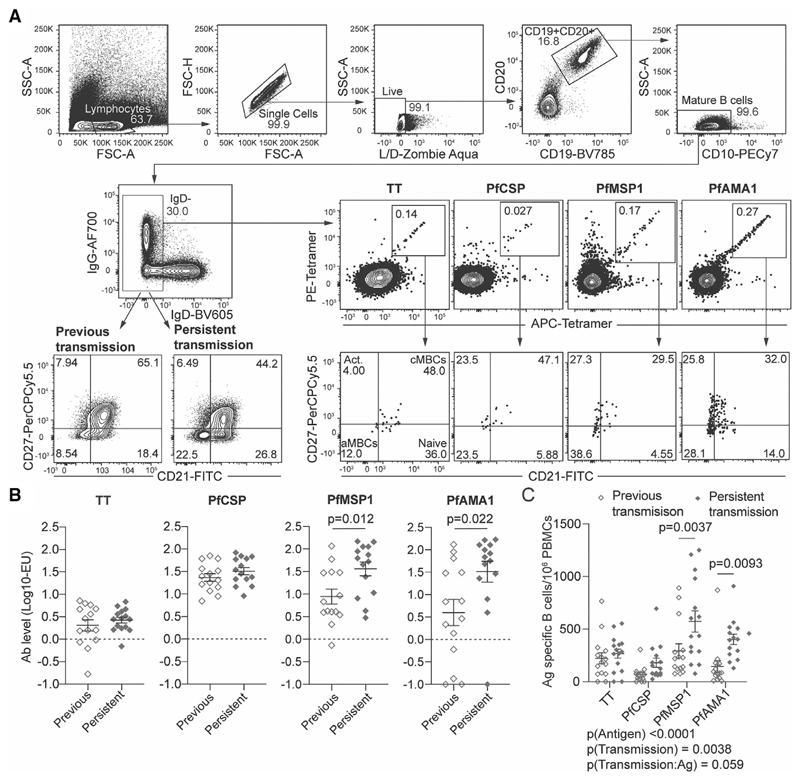Figure 1.
Individuals in areas of persistent transmission have high numbers of circulating B cells specific for blood stage Ags. PBMCs from 30 individuals (15 previously exposed; 15 persistently exposed in one experiment) were analysed to determine the frequency of Ag-specific MBCs and Ab titers to TT and a panel of malaria Ags. (A) General gating strategy for the identification of Ag-specific B cells and determination of B-cell phenotype. Data from a representative individual who had detectable levels of Ag-specific B cells for all Ags studied shown. (B) Quantitation of levels of circulating antibodies to TT, PfCSP, PfMSP1 and PfAMA1, among individuals exposed to moderate or low levels of malaria transmission. Units are international units for TT and arbitrary ELISA units for the Plasmodium Ags; mean ± SEM shown, data analysed by Students t-test for each Ag. (C) The number of tetramer+ IgD- B cells per million PBMCs specific for each of the Ags studied; mean ± SEM shown; analysis was via two-way ANOVA controlling for subject as a random effect; details of the model are given below the graph.

